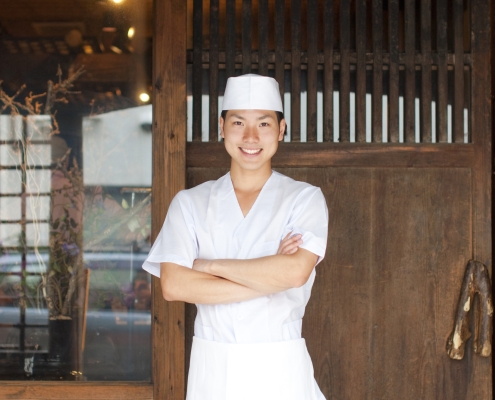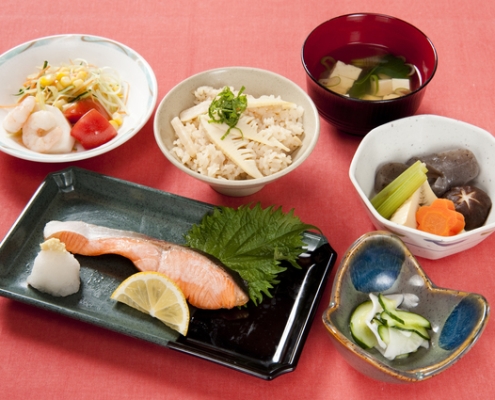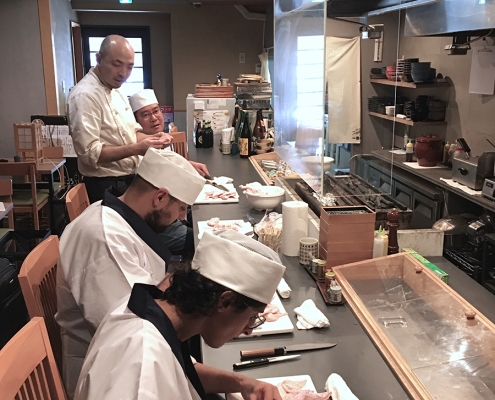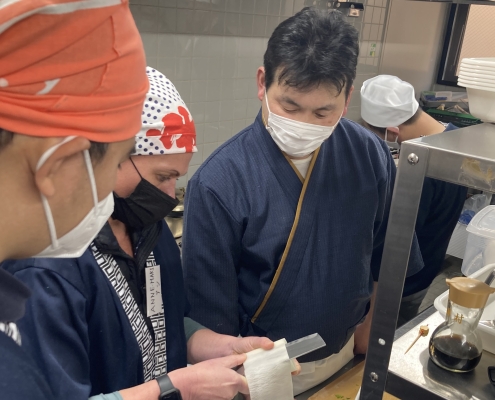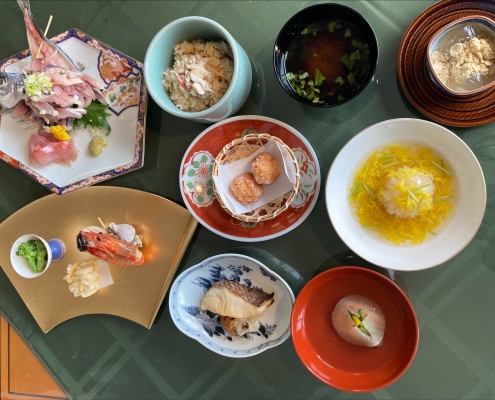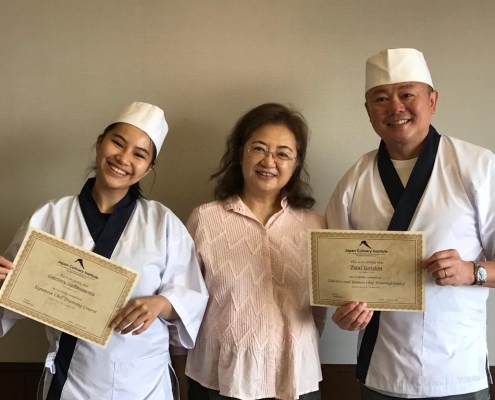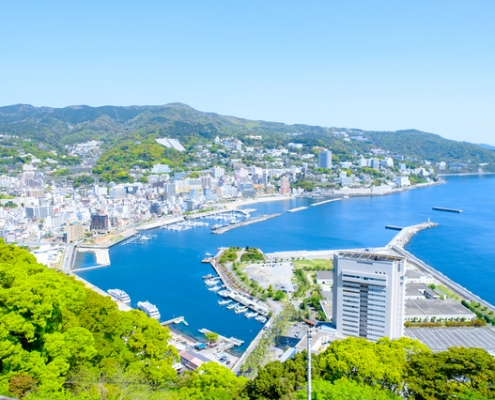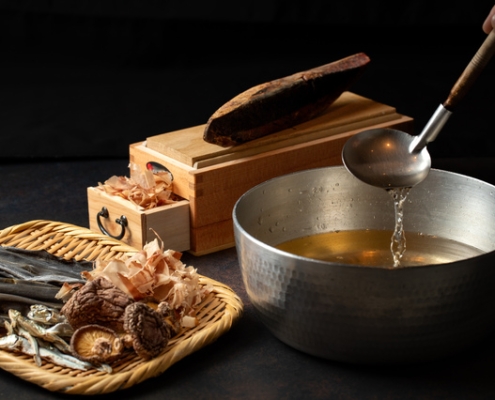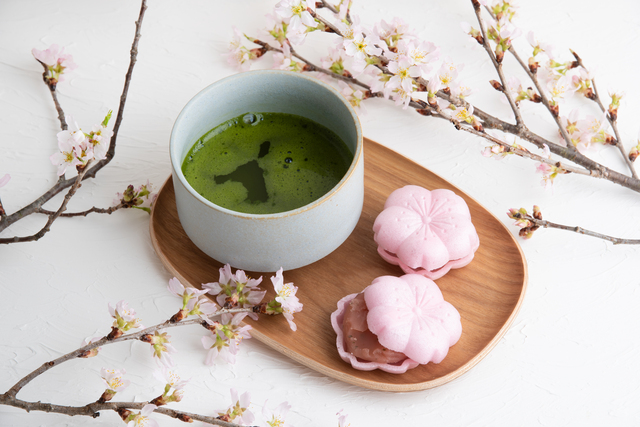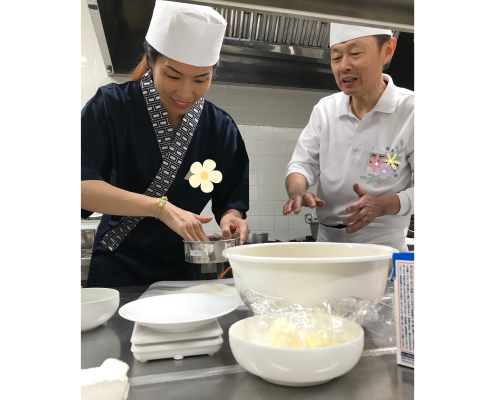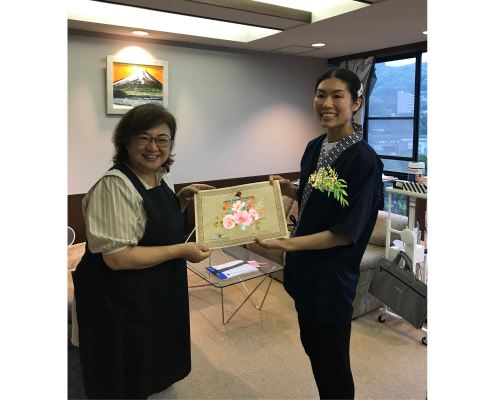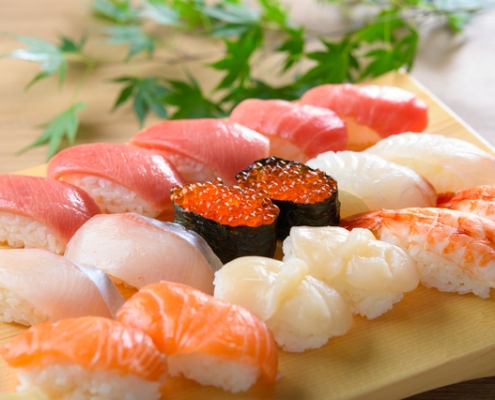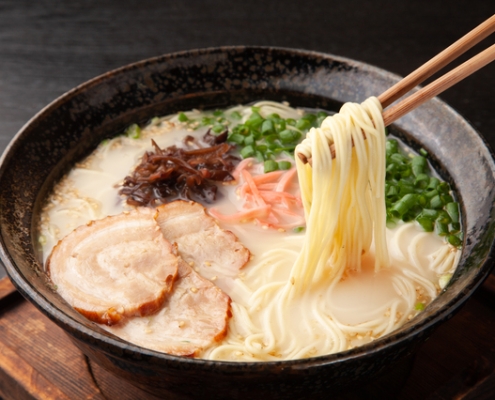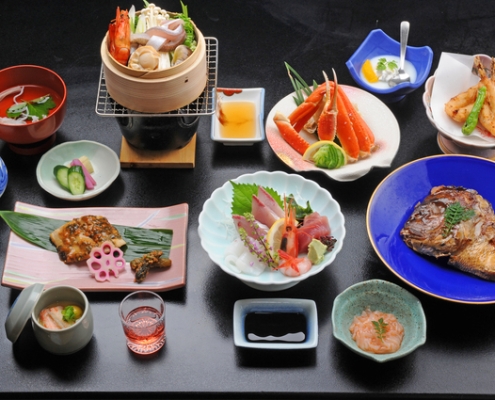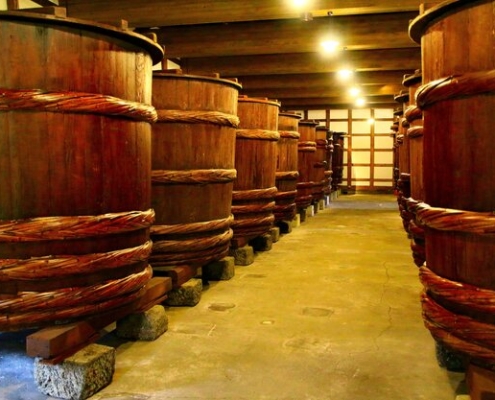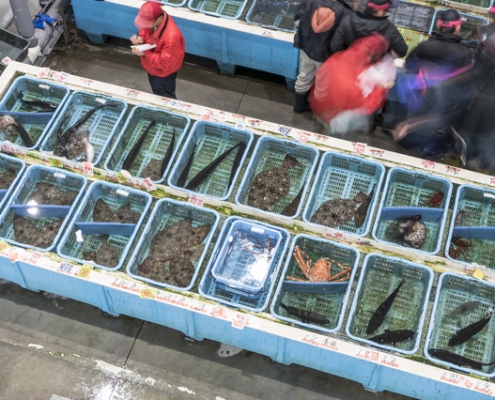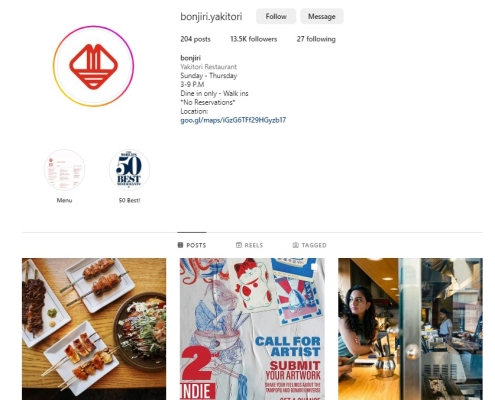Japanese Cuisine Chef Training Course
Japan Culinary Institute (JCI) was founded based on our experience as a study abroad program agent for more than four decades so that international students can learn authentic washoku.
The institute is affiliated with local restaurants in the Atami area and provides students with the advantage of learning a wide variety of dishes, including sushi, tempura, washoku, ramen, yakitori, and wagashi, Japanese confectionery.
School Type
Private School
Japanese Cuisine, Sushi, Ramen, Yakitori, Wagashi and more
Location
2-21-21 Minaguchicho Atami-shi
Shizuoka, Japan
*The classes may take place at restaurants in the Atami area or Tokyo as well as the school located at the above address.
Where is Atami?
Atami is located to the west of Tokyo, about 100 km or an hour away by bullet train. This hot spring resort is near Mt. Fuji and located on the seaside.
Well-known for its fresh seafood, such as horse mackerel, kinmedai (splendid alfonsino), squid, and whitebait, the town is frequented by tourists who enjoy food and hot springs.
Japanese Cuisine Chef Training Course
Course Content
This course teaches students the professional techniques and knowledge in 7 weeks, 11 weeks and 22 weeks(11 weeks lessons and 11 weeks internships). The curriculum covers all the Japanese Food culture. At the end of the course, the student will have gained knowledge in general Japanese culinary culture with deep understanding of ingredients and the Japanese culture.
The program also includes various field study, such as visits to sake brewery, fish market, etc. It is an ideal course for those who aim to work professionally in the field of Japanese cuisine. The program includes following subjects:
Japanese Home Cooking
As in many other countries, the food served at restaurants is different from the everyday home-cooked meals. Learn how to make various “taste of mother” served at home on a daily basis, using all-natural ingredients and making soup stock from zero.
You will also learn how to make lunch boxes for eating outside.
Japanese traditional foods
Acquire the fundamental base of Japanese cuisine by learning traditional foods and ingredients which have been developed in deep relations with its diverse geographic and climatic character, as well as its style of living and the way the Japanese perceive life.
Examples of recipes: Pickles, Umeboshi (Japanese plum pickles), Nimono (simmered dishes), Konnyaku, wild vegetables, different types of rice cakes, handmade seasonings, Agar jelly.
Wagashi (Japanese sweets) and Green Tea
Wagashi (Japanese sweets) has its own world and philosophy reflecting Japanese culture.
You will learn and acquire techniques for preparing a variation of sweets, with the context of seasons, occasions, and cultural background in which they are served.
Kaiseki (full-course)
Kaiseki cuisine refers to the dishes served for entertaining guests in the event of a tea ceremony. It is characterized by extreme sophistication of the taste and the appearance, carefully selected ingredients, and the chef’s meticulous attention to the arrangement of the vessels and space.
The world of kaiseki is a very deep world involving the concept of wabi-sabi (sorrowful loneliness) and the yin- yang five elements, but we aim to master it in two weeks. Students will learn the basic structure of Kaiseki, and learn the basic menu.
Sushi
This is a course that aims to introduce you to the world of Sushi. After learning the basics of Japanese cuisine, we go to the fish market to learn how to select ingredients.
Topics:
· How to cut fish
· How to sharpen a kitchen knife
· How to make vegetable rice
· Preservation method of ingredients
· How to prepare sushi
· How to use Instruments
Yakitori and Chicken Dishes
This is a course aiming to learn general menu aiming to acquire the level of knowledge and expertise actually used in yakitori shops.
· Introduction to yakitori ingredients – about meat and vegetables –
· How to cut, skewer and grill
· How to make Yakitori sauce
· Yakitori instruments (Types of grillers, charcoal)
· How to serve yakitori
Ramen and Japanese noodles
Japanese people love noodles.
Nowadays, ramen is attracting attention from all over the world. There are more than 3,500 ramen restaurants in Japan, and each restaurant is constantly researching and competing to create unique and delicious noodles, soups, and toppings, and is constantly evolving.
There are many different types of ramen, but you will learn about the most beloved and popular among the Japanese people. You will learn about the many types of soups and toppings that go perfectly with them, as well as the unique noodle combinations. You will also learn about the many types of unique Japanese noodles.
You will learn about pork ramen, yuzu salt ramen, seafood ramen, chicken ramen, soupless meat mixed with soba, handmade udon, tempura udon, Stir-fried udon and street food Stir-fried noodle.
There will also be a tasting tour at a famous ramen shop and a well-known Japanese buckwheat noodle shop.
Kaiseki II and Sake
In the second Kaiseki course, students will try to incorporate all the dishes they learned during the previous weeks, and create their original menu – How to plan a course, which uses high-level skill and expression of the season. Also, the student will learn to recommend a sake to accompany the dishes.
Sake is essential to Japanese cuisine. You will learn its brewing methods, characteristics of Koji (yeast used for sake), the variation of the mixture of ingredients, managing fermentation environment, to produce the different tastes and combination with dishes. The course includes also a visit to a sake factory.
Field Studies
During the course period, there will be a number of extracurricular training sessions and special lectures to deepen the knowledge of Japanese cuisine and the Japanese culture. By providing opportunities to feel and experience what you can do only in Japan, we aim to give students an edge to add to their dishes and the restaurant as a whole.

Course Schedule
7 week Course
7 week Course
Sep 24 Mon 2024 – Nov 15 Fri 2024*
(*including 1 week break Nov 4 to Nov 8)
Mon to Fri 4 to 6 hour / day
*The classes may end early or late on some days.
*If the class falls on a Japanese national holiday, the schedule will be adjusted; for example, the class may be extended on another day.
11 week Course
11 week Course
May 13 Mon, 2024 – Aug 2 Fri, 2024**
(**Including 1 week break / Jul 1-5)
Sep 24 Mon , 2024 – Dec 13 Fri, 2024***
(***Including 1 week break / Nov 4-8)
Mon to Fri 4 to 6 hour / day
*The classes may end early or late on some days.
*If the class falls on a Japanese national holiday, the schedule will be adjusted; for example, the class may be extended on another day.
22 week Course including internship program
22 week Course including internship program
Sep 24 Mon, 2024 – Mar 14 Fri, 2025**
(**Including 4 weeks break / Nov 4-8 & Dec 16-Jan 5)
Mon to Fri 4 to 6 hour / day
*The classes may end early or late on some days.
*If the class falls on a Japanese national holiday, the schedule will be adjusted; for example, the class may be extended on another day.

Price
Price for 7 weeks
Enrollment Fee: 3,000USD
Tuition Fee: 6,900USD
Total: 9,900USD
*If you would like to enroll in this course as the only student, there will be an additional fee.
Price for 11 weeks
Enrollment Fee: 4,000USD
Tuition Fee: 10,500USD
Total: 14,500USD
*If you would like to enroll in this course as the only student, there will be an additional fee.
Price for 22 weeks including internship program
Enrollment Fee: 10,000USD
Tuition Fee: 19,000USD
Total: 29,000USD
*If you would like to enroll in this course as the only student, there will be an additional fee.
Price includes
-Culinary lessons
-Ingredients
-Chef Coat & Cap
-English interpreter service during culinary lessons
-Certificate of Course completion
-Visa documents requested by the student
-Support in English during their stay
Price does not include
-Accommodation
-Transportation
-Students’ travel insurance
-Personal costs
Eligibility
-Those who can stay in Japan legally during the course.
-Those who are in good health.
Language
There will be an English translator and you do not need to be fluent in Japanese.

Level
Beginners can participate in the course.
How to make a payment?
We accept payment only through bank transfer.
Certificate
We will issue a certificate in English for those who meet the requirements for graduation.
Acommocation
Please kindly find a hotel or Airbnb near the institute.
Insurance
To avoid any troubles regarding accidents or sickness, we ask every student to join travel insurance or employer-sponsored insurance that is valid in Japan.
Alumni
Ms. Maryam Alnusif
After Ms. Maryam Alnusif completed Yakitori Course in Feb 2020, she opened a Yakitori restaurant named ‘BONJIRI’ in her home country Kuwait, and the restaurant has been selected one of the Middle East/North Africa’s 50 Best restaurants 2023.
How to apply?
You need to complete an application form with your signature.
Please contact us for more information!


